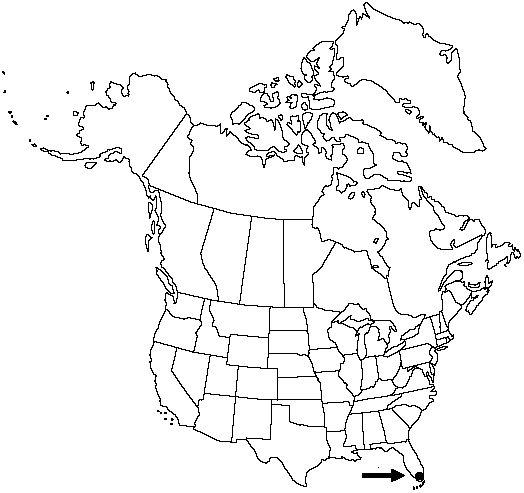Difference between revisions of "Polypodium triseriale"
J. Bot. (Schrader) 1800(2): 26. 1801.
FNA>Volume Importer |
imported>Volume Importer |
||
| (6 intermediate revisions by 2 users not shown) | |||
| Line 11: | Line 11: | ||
|name=Goniophlebium triseriale | |name=Goniophlebium triseriale | ||
|authority=(Swartz) Pichi-Sermolli | |authority=(Swartz) Pichi-Sermolli | ||
| − | }}{{Treatment/ID/Synonym | + | |rank=species |
| + | }} {{Treatment/ID/Synonym | ||
|name=Polypodium brasiliense | |name=Polypodium brasiliense | ||
|authority=Poiret | |authority=Poiret | ||
| + | |rank=species | ||
}} | }} | ||
|hierarchy=Polypodiaceae;Polypodium;Polypodium triseriale | |hierarchy=Polypodiaceae;Polypodium;Polypodium triseriale | ||
| Line 28: | Line 30: | ||
|elevation=0 m | |elevation=0 m | ||
|distribution=Fla.;s Mexico;West Indies;Central America;South America to s Brazil;Bolivia. | |distribution=Fla.;s Mexico;West Indies;Central America;South America to s Brazil;Bolivia. | ||
| − | |discussion=<p>Commonly found in montane tropical rainforests, the epiphytic Polypodium triseriale is quite distinct from and probably only distantly related to other North American members of Polypodium. It seems likely that spores are occasionally blown into southern Florida, probably from the West Indies, and plants develop as naturalized populations.</p> | + | |discussion=<p>Commonly found in montane tropical rainforests, the epiphytic <i>Polypodium triseriale</i> is quite distinct from and probably only distantly related to other North American members of <i>Polypodium</i>. It seems likely that spores are occasionally blown into southern Florida, probably from the West Indies, and plants develop as naturalized populations.</p> |
|tables= | |tables= | ||
|references= | |references= | ||
| Line 37: | Line 39: | ||
-->{{#Taxon: | -->{{#Taxon: | ||
name=Polypodium triseriale | name=Polypodium triseriale | ||
| − | |||
|authority=Swartz | |authority=Swartz | ||
|rank=species | |rank=species | ||
| Line 51: | Line 52: | ||
|publication year=1801 | |publication year=1801 | ||
|special status= | |special status= | ||
| − | |source xml=https:// | + | |source xml=https://bitbucket.org/aafc-mbb/fna-data-curation/src/2e0870ddd59836b60bcf96646a41e87ea5a5943a/coarse_grained_fna_xml/V2/V2_739.xml |
|genus=Polypodium | |genus=Polypodium | ||
|species=Polypodium triseriale | |species=Polypodium triseriale | ||
Latest revision as of 20:25, 5 November 2020
Stems not whitish pruinose, slender to stout, 5–15 mm diam., taste unknown; scales brown, ovate-acuminate, symmetric, somewhat to strongly clathrate, margins somewhat lighter, entire. Leaves to 90 cm. Petiole slender to stout, to 7 mm diam. Blade broadly ovate, 1-pinnate at base, widest at or near base, to 60 cm wide, papery to almost leathery; rachis glabrous abaxially and adaxially. Segments (pinnae) linear to oblong, apex acuminate; proximal segments stalked to nearly sessile, distal ones slightly narrowed but broadly adnate at base, less than 35 mm wide; margins entire or slightly wavy; apex acute; midrib glabrous adaxially. Venation anastomosing with a regular series of 2–5 rows of areoles on both sides of costae. Sori in 1–3 parallel rows on both sides of costa, 0.5–3 mm diam., circular when immature. Sporangiasters absent. Spores less than 58 µm, verrucose, with surface projections less than 3 µm. 2n = 148.
Habitat: Epiphytic
Elevation: 0 m
Distribution

Fla., s Mexico, West Indies, Central America, South America to s Brazil, Bolivia.
Discussion
Commonly found in montane tropical rainforests, the epiphytic Polypodium triseriale is quite distinct from and probably only distantly related to other North American members of Polypodium. It seems likely that spores are occasionally blown into southern Florida, probably from the West Indies, and plants develop as naturalized populations.
Selected References
None.